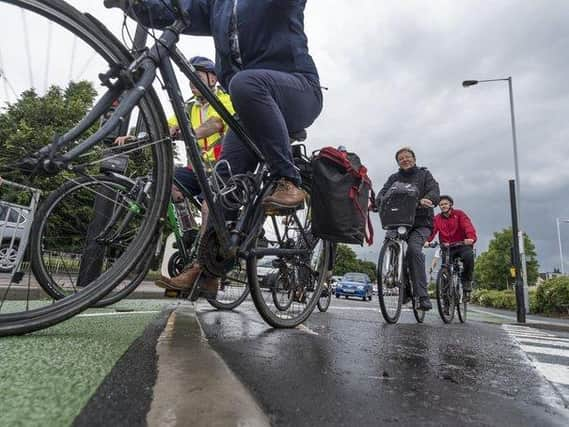'Cyclists do drive motorists somewhat insane': Council urged to resolve escalating conflicts arising on rural roads due to sharp increase in bicycles


A meeting of North Yorkshire County Council’s executive heard while the county’s 9,000km road network had seen an upward trend in cycling inspired by the 2014 race, since the pandemic there had been a sharp increase in riders on rural roads.
Ahead of leading councillors approving the 2021-2026 York and North Yorkshire Road Safety Partnership Strategy, opposition members questioned whether more could be done to resolve an escalating conflict between cyclists and motorists in rural areas.
Advertisement
Hide AdAdvertisement
Hide AdThe calls follow the authority coming under sustained pressure to reconsider its policy to focus cycling road improvements on urban areas, and in particular Harrogate, claiming it benefits more people.
Officers told the meeting statistics showed while cyclists and drivers were equally to blame for cycle collisions in urban areas of the county, cyclists were at fault for about 70 per cent and drivers 30 per cent of cycle collisions on rural roads.
Councillor Stuart Parsons, leader of the authority’s Independent group, called for twin educational campaigns to teach motorists what they need to do when encountering a large group of cyclists in places like Wensleydale and to teach cyclists how they should be riding on the lanes.
He said cyclists were “making themselves a great number of potential enemies and therefore dangerous situations by their approach to using the roads, especially when they are not road taxpayers when using it for their cycles”.
Advertisement
Hide AdAdvertisement
Hide AdCoun Parsons added: “Cyclists do drive motorists somewhat insane, especially when they are travelling two or three abreast, which they seem to be doing more and more so. On these winding roads it makes it difficult for anybody to pass safely.”
The authority’s executive member for highways, Councillor Don Mackenzie replied that while some cyclists needed to learn not to “create obstructions on the highway”, his sympathies were with cyclists as their equipment weighed a few kilograms as opposed to cars that weigh one or two tonnes.
Councillors heard the increase in cyclists would be reflected in government changes to the Highways Code this autumn, such as drivers needing to give greater space to cyclists and cyclists needing to ride single file to help vehicles overtake.
The meeting was told the authority was already trying to educate drivers and cyclists, but the council’s Liberal Democrat group leader Councillor Bryn Griffiths said the council’s highways department appeared to be “reactive rather than proactive” over dealing with risks on the roads.
Advertisement
Hide AdAdvertisement
Hide AdHe said despite some roads being riddled with potholes and being popular cycling routes they never appeared to reach the council’s criteria for road repairs.
Coun Griffiths said: “In industry it is considered good practice to look at near misses and be proactive and engineer or manage out issues that they have.
“Because of the state of the road cyclists are having to meander all across the road to avoid bumps, lumps and hollows and you get near-misses. But these near-misses aren’t recorded and used to help manage the highway.”
The meeting heard the council had higher maintenance standards for popular cycle routes.
Advertisement
Hide AdAdvertisement
Hide AdCoun Mackenzie said the authority was aware sides of roads tended to get potholes which forced cyclists to swerve, but added the council had spent a record amount on road repairs this year.
He said near-misses were difficult to measure and as the council had limited funding for road safety it directed focused on locations which accident data showed were the most hazardous.
Coun Mackenzie said: “I hear every day ‘this road is an accident waiting to happen’. I’ve heard that about certain roads since I took on this portfolio in 2015 and we’re still waiting for the accident to happen.”